North Vietnam, 40th Anniversary of the Russian Revolution, November 7th, 1957, Michel Nr. 64-66; Like China, the Soviet Union was a major supporter to North Vietnam during the First Indochina War and for many years thereafter. Russia provided economic and military support in shape of military advisors and weapons that were crucial in winning the war against the French and later against the United States. The relationship was not without tensions though. The Soviet Union considered North Vietnam more as a vassal state that, as a fellow communist country, was simply in its influence area, while North Vietnam was more self-confident and believed that it had earned respect in its own right as power in South East Asia. The National Bank Printing Works Hanoi produced three values (100D, 500D and 1,000D) in sheets of 100 stamps each. The 100D value was intended for the domestic standard letter rate, while the higher values were intended for standard air mail abroad and registered air mail abroad. The Vietnamese Postage Stamp Catalogue and Scott report the perforation as 12.5 while Michel reports a perforation of 13.0. All the editors stamps measure 12.5 so Michel, again, appears to be wrong here. The perforation holes are very small and this means that most stamps show a rather poor perforation in which the holes are often left partially unpunched. Good perforations warrant a surcharge.
Most used stamps come in the shape of cancelled to order stamps like this sample of the 100D value which shows the typical Hanoi corner cancel that was struck across four stamps at a time and is much clearer than standard cancels.The stamp shows the plate error “broken outer frame line in bottom right”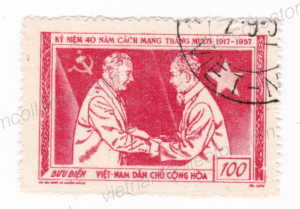
This mint block of four shows the plate error “broken top frame line” on the bottom left stamp (Position in sheet B1).
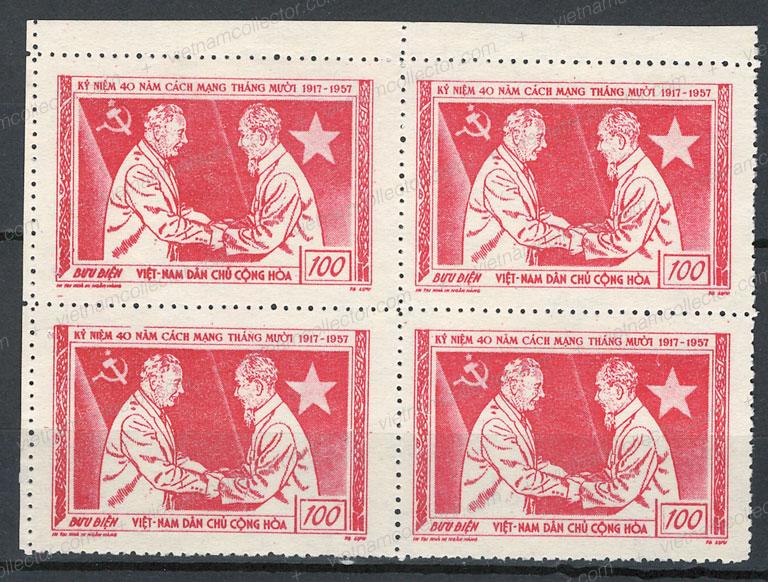
Detailed scan of the affected area.
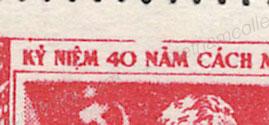
Another, more significant plate error can be found on the 100D stamp. On this used block of four the lower right stamp is missing the entire top border line above the top inscription (Field C6).
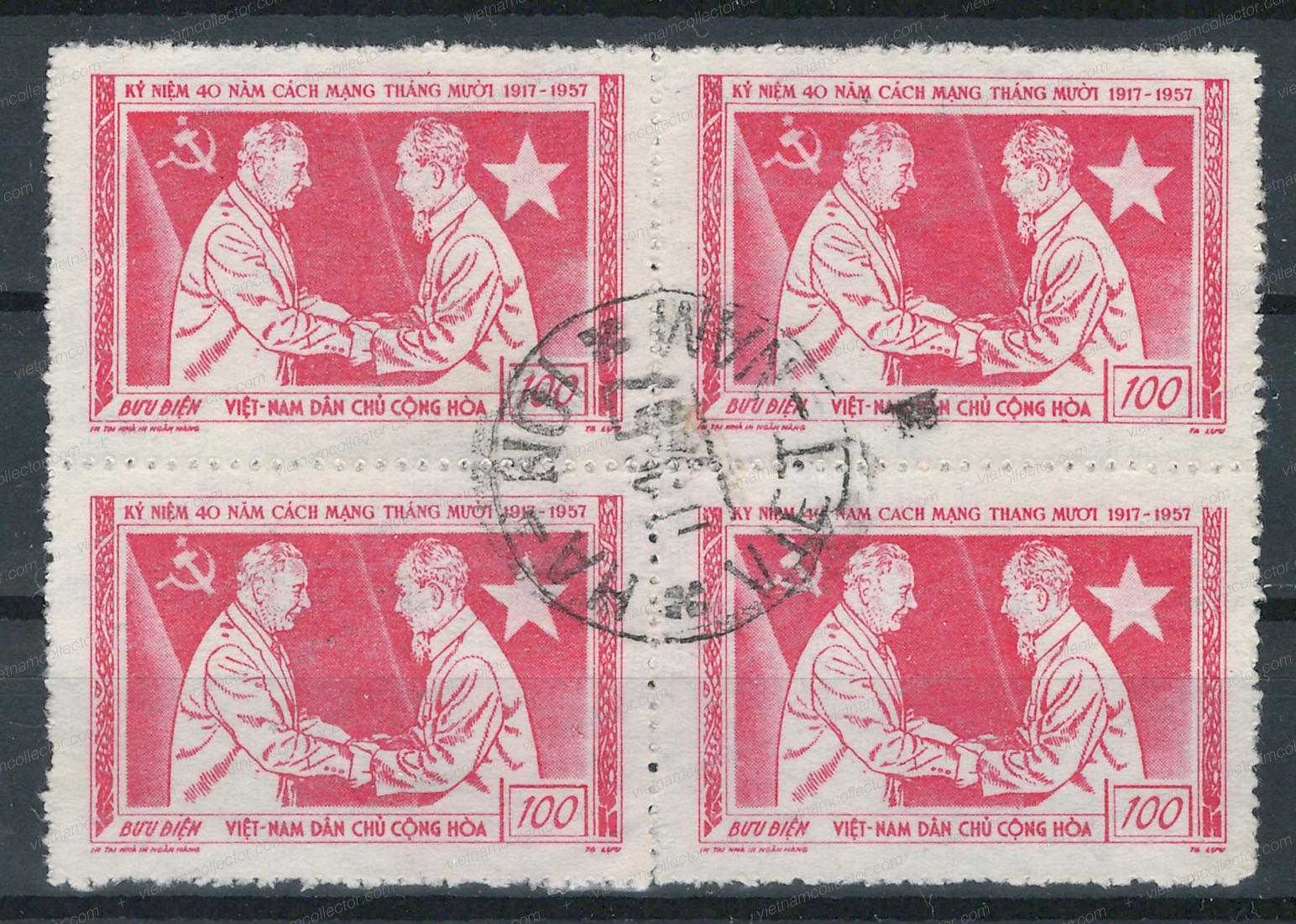
Detailed of the affected area.

Here is the same error in a mint strip of three. The middle stamp is the error stamp.
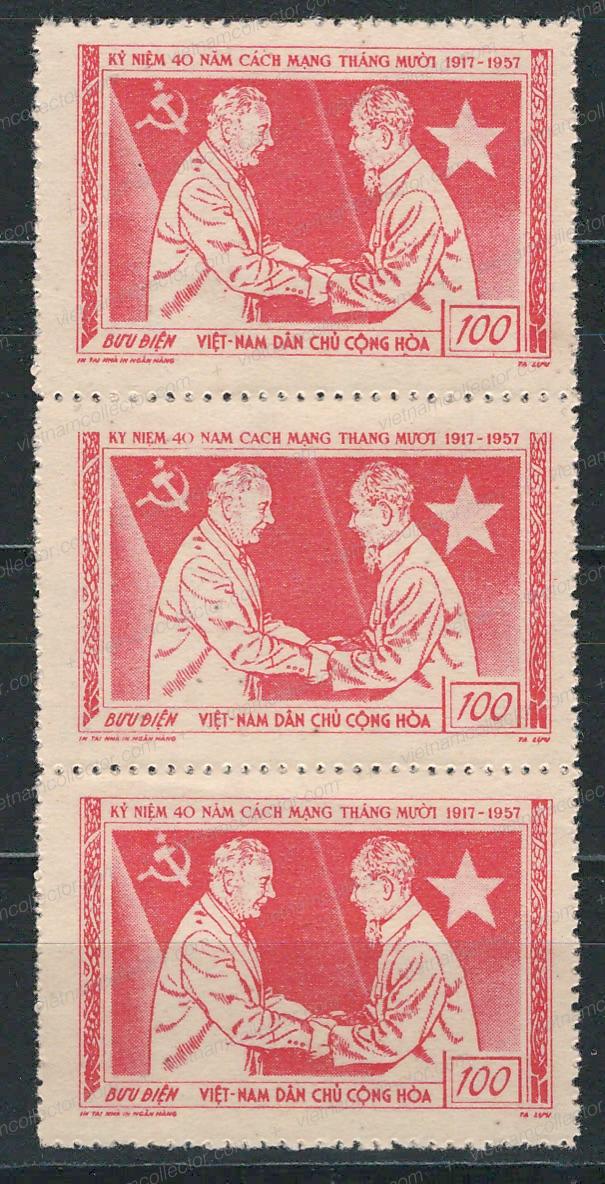
Mint pair of two 100D stamps on which the right stamp shows a production flaw “flame behind Woroschilow’s back”.
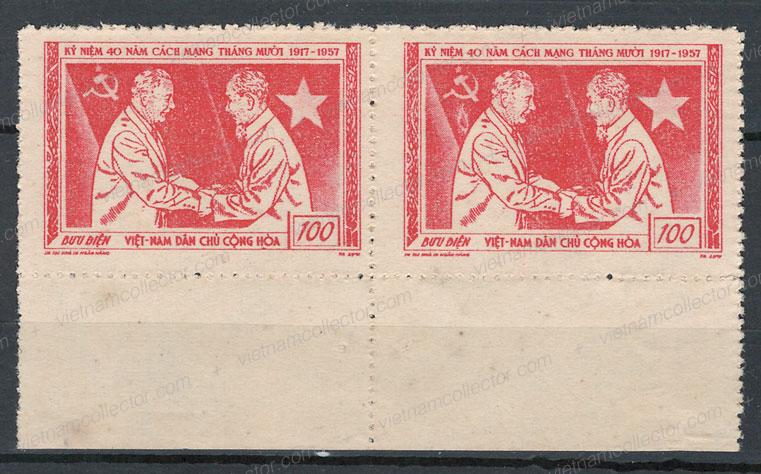
Detailed scan of the affected area.
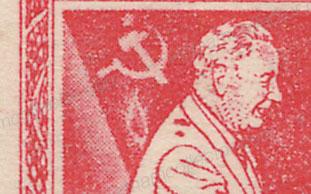
Postally used values are quite scarce and they are worth at least ten times that of CTO stamps.
Especially the 1,000D value is very hard to find postally used or on cover. Here is a postally used specimen used shortly after the issue date in Hanoi.
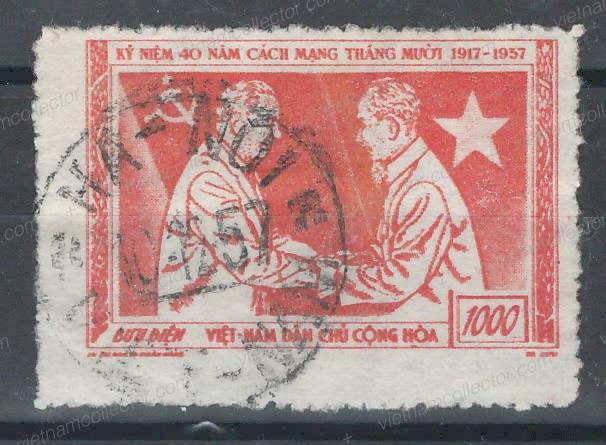
Here is a rare block of four of the 100D value postally used in Hai-Phong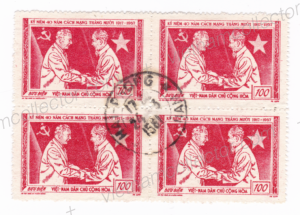
Perforation Errors do occur. Here is a mint block of four of the 100D value that is vertically imperforate.
Postal history with these stamps is rare. Here is a letter from January, 1958 to Czechoslovakia franked with a single value of the 100D stamp plus other early NVN stamps for a total postage of 650 Dong. The letter carried a 350D surcharge (per 5g) for the air mail mailing on top of the standard surface postage to Eastern European countries which amounted to 300D.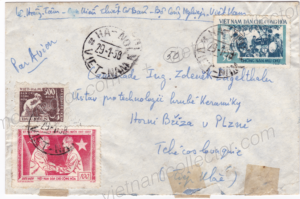
Another letter to Czechoslovakia from June, 1958 again franked with one of the 100D values and other early NVN stamps for a total postage of 300D. This means the letter was sent by surface mail.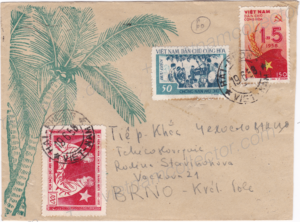
Here is an interesting mixed currency franking from April, 1959. On March 1, 1959 the Old Dong was devalued 1,000:1 so that the stamps in the old currency were now worth 250:1,000 = 0.25 New Dong or 25 Xu. A 5 Xu value of the Sisters Tru’ng was added for an overall stage of 30 Xu, which, again, reflected the standard surface letter rate (up to 20g).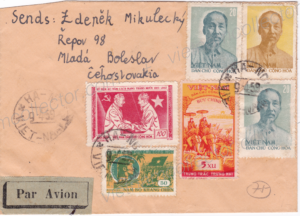
Another mixed currency franking mailed as “Specimen/Printed Matter” to England in 1964 using two of the 100D Russian Revolution stamps denominated in old Dong (and worth only 20xu after the March 1st, 1959 devaluation), plus one 50xu Artist Congress and 4xu Start of the War stamp for an overall postage of 74xu.
This is a Xunhasaba bulletin that announced the issuance of the stamps featuring the building of the sluice Cong Xuan-Quan in May of 1959 (Michel Nr. 98-99). It features the 100D stamp of the Russian Revolution plus a 300 D value of the Cotton Factory set from 1957 for total of 400 Old Dong, now worth 40 Xu in New Dong. Since the letter went to West Germany the postage was higher than to Eastern European countries. Note the red propaganda hand cachet.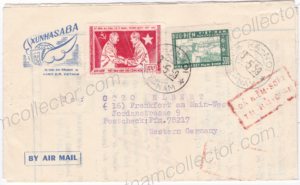
Very rare letter featuring the entire set to the United States (rare destination) mailed in July of 1962. Little is know about the postage rates to the U.S. but this letter is probably of philatelic origin as it features two complete sets for an overall postage of 2,200 Old Dong or 2.2 New Dong which would have been high for the time. Nevertheless the higher values are almost impossible to find on cover. Less than a handful of covers with the 1,000D are known.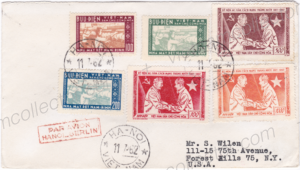
Mixed franking most likely from a member of the East German Consulate (which had access to official stamps) featuring a mix of regular stamps (including the rarer 500D Russian Revolution stamp) and two official Union Congress stamps (40D and 100D) for an overall postage of 1,740D. The letter was registered. The basic surface letter rate abroad amounted to 300D, the air mail surcharge to 350D (for every 5g) and the registration fee to 600D. So this letter must have weighed between 10-15g.
Mixed franking of the 100D and 1,000D value paying an overall postage of 1,100D on an air mail letter from Hanoi to West Germany. The sender fooled the postal clerk by indicating that the letter was directed to East Germany though Fulda was located in West Germany. This allowed for the East German tariff to apply. The standard surface letter base rate to East Germany amounted to 300D in November of 1957 and air mail surcharge amounted to 350D for each 5 grams of weight so the letter most likely weighed up to 10 grams. The cover is hence slightly overpaid (by 100D), however this is still a rare find. Less than a handful covers are known with the 1,000D value. Ex Klewitz.


Registration Nr.100065

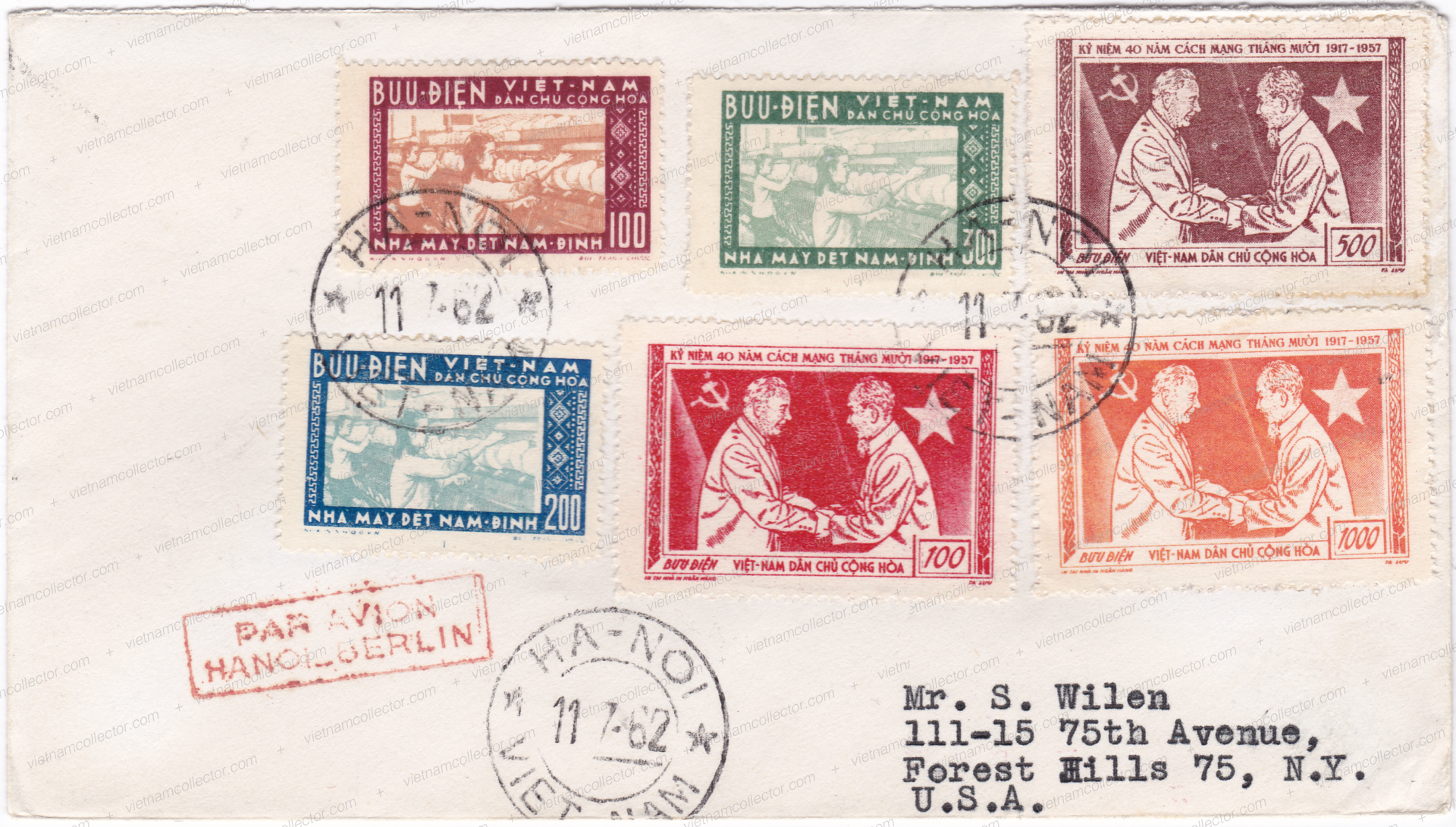

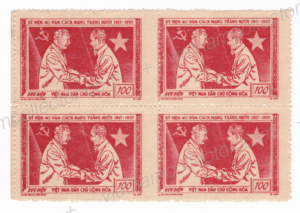
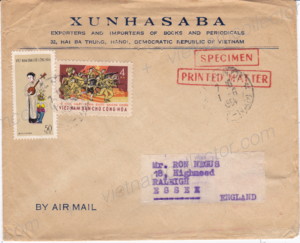
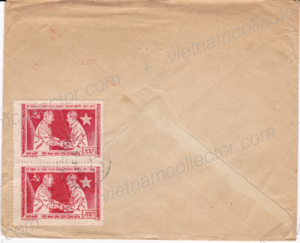
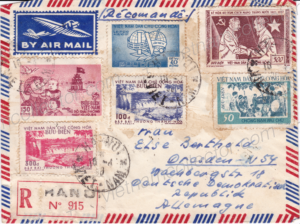
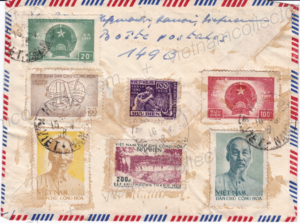
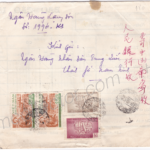
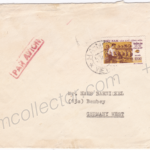
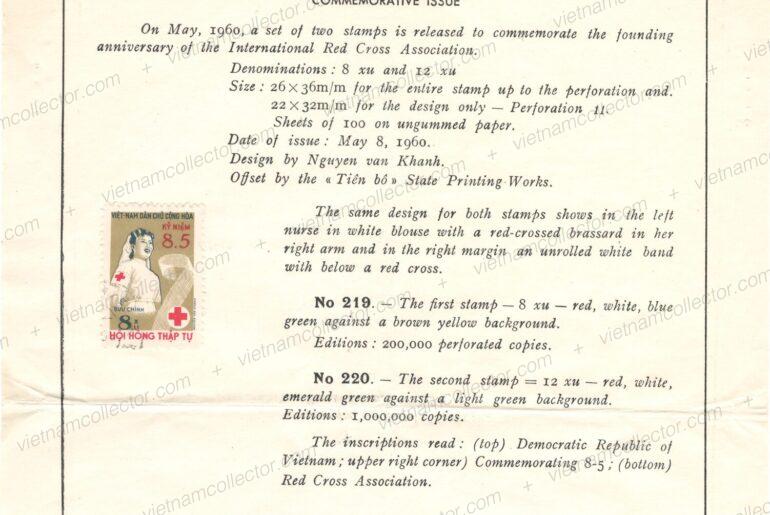
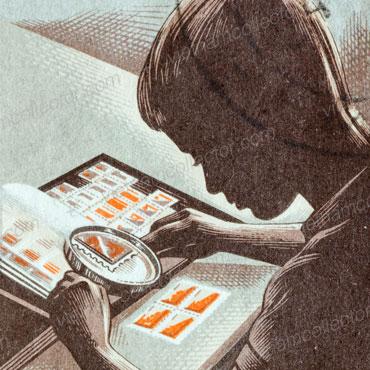
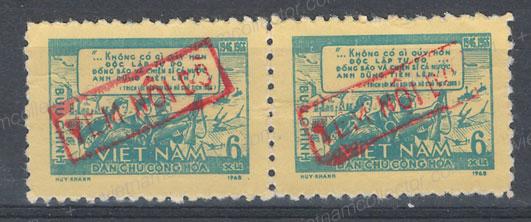
Comments are closed.